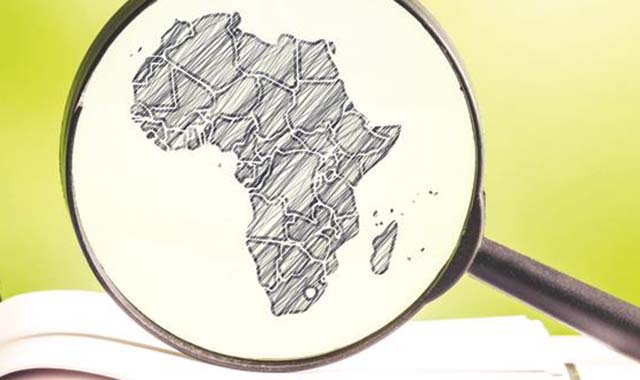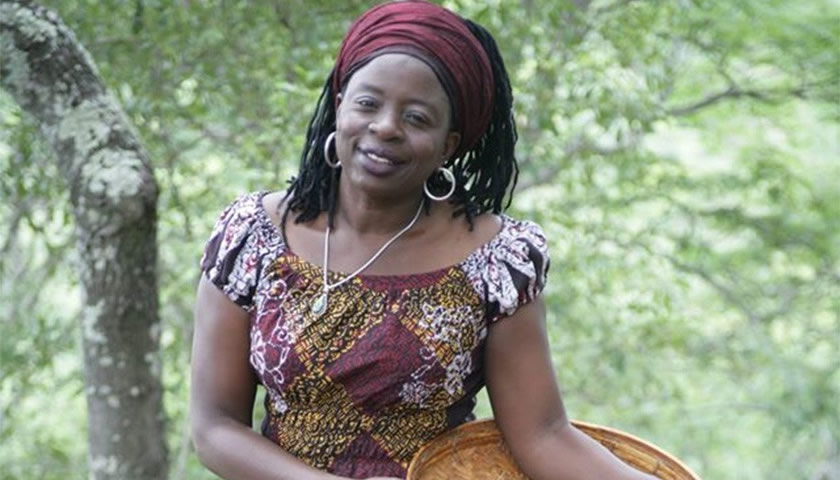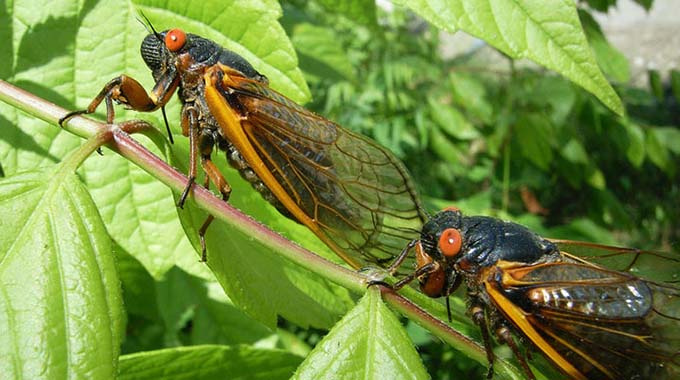The quest to reclaim Matopos
Dr Sekai Nzenza on Wednesday
“Until the lions have their own historians, the history of the hunt will always glorify the hunter.” — Chinua Achebe, renowned Nigerian author. “Ko, varungu ava havana hama here dzinovaviga kumusha kwavo?” asked my cousin Piri meaning, why is Cecil John Rhodes, Dr Starr Jameson and Sir Patrick Coghlan and those who died at the battle of Shangani buried at Matopos, instead of the United Kingdom where they originally came from.
We were standing at the summit of Matopos surrounded by the grandeur of Zimbabwe’s beauty and mystery.
With me, were my cousins Reuben, Piri and our young niece Mutsa, who sometimes lives with Reuben while studying to rewrite her Ordinary Levels.
Although the main purpose of our visit to Bulawayo last week was to attend an all-night memorial service for our uncle, we decided to visit the Matopos first.
I am still on my secret mission to introduce Piri to significant historical places in Zimbabwe. Sometimes she is a willing participant, but most times, she is not. This time, however, she surprised us with the quick interest she had in Matopos. Instead of sitting on a bench looking at the World’s View while enjoying a beer that she carried in her handbag, she walked along with us to visit Cecil John Rhodes’s grave and that of the others buried at Matopos.
Last year at Easter, Reuben came here to see Matopos for the first time. I visited Matopos many years ago with a group of Australians.
At that time, I was a reluctant tourist being dragged along by adventurous Westerners who were curious to see new places in Zimbabwe.
I recall seeing Cecil Rhodes’ grave and perhaps some other graves. But the spiritual and historical significance of this place did not register in my memory then.
Reuben said Europeans have family trees that are well documented and recorded over many years.
The relatives of the three Europeans and the soldiers in the Monument lying at Matopos would have visited this place to remember and pay homage to their ancestors.
Reuben pointed to the monument, just a little further down from where Rhodes is buried. We walked there.
Among the 34 soldiers was Allan Wilson, the guy who led the ill-fated Shangani Patrol battle. The troops tried to pursue King Lobengula and they fell to the guns and assegais of the Matebele warriors on December 4, 1893. On the monument, it is written that: “There were no survivors.”
The soldiers were initially buried at Pupu and moved to Great Zimbabwe Ruins on August 14, 1894. Later on they were dug out again and buried at Matopos in July 1904.
The soldiers were moved here because Cecil Rhodes wrote that instruction in his will. Cecil John Rhodes died on March 26, 1902 aged just 49.
In Section 3 of Cecil Rhodes’s will it said: “I admire the grandeur and loneliness of the Matopos . . . and therefore I desire to be buried in the Matopos on the hill which I used to visit and which I called the ‘View of the World’ in a square to be cut in the rock on the top of the hill covered with a plain brass plate with these words thereon — “Here lie the remains of Cecil John Rhodes” and accordingly I direct my executors at the expense of my estate to take all steps and do all things necessary or proper to give effect to this my desire and afterwards to keep my grave in order at the expense of the Matopos and Bulawayo Fund hereinafter mentioned . . .”
In accordance with his will, Rhodes’s grave lies on top of Matopos or the Malindidzimu Shrine (resting place of the spirits) in the Matopo hills, a place highly revered in our Shona and Ndebele traditions.
This is a United Nations Educational Scientific and Cultural Organisation (UNESCO) World Heritage site and visited by thousands of tourists each year. There is a policeman to guard it 24 hours a day.
“Mashura!” said Piri. “The relatives of these white men know they are buried here? And yet nobody has come to collect them?”
I said a lot has been said about the graves at Matopos. It would be quite difficult to reach an agreement on what should be done about the graves, especially, the one belonging to Cecil John Rhodes.
Already, there has been so much controversy regarding his statue in South Africa at the University of Cape Town. Our own Rhodes statue that used to stand in Cecil Square during Rhodesia is hidden behind the National Archives.
“What controversy?” asked Piri.
“The spirits of these men are crying to return home. The least their people can do is to come here and dig them out and bury the bones back in their villages back in Britain.”
Mutsa interjected: “Why should you bother the dead? Leave these guys alone. How many people are dying overseas and they are buried over there? Do we go there and collect their bodies? Besides, we paid $4 each to come here. This is good tourism. Zimbabwe needs the money. These guys are paying rent,”
Mutsa was pointing to the monument and the other graves.
“We paid $4 to look at the graves of foreigners?” asked Piri in disgust.
Reuben looked angry, upset or perhaps disturbed or uncomfortable.
“Mainini Mutsa, do you understand history? This is not about money. These men lying here should never have been allowed to do so. This place is sacred to our ancestors. I say, their bones must be exhumed and sent back home!” shouted Reuben.
Piri nodded in agreement.
She said the Shona and Ndebele spirit mediums should brew beer and speak to the ancestors asking for spiritual guidance in removing the bones and ensuring their safe travel to Britain.
“Keeping the bones of foreigners on your sacred place can only bring bad luck,” said Piri. “Vatorwa vanhu ava,” she said, meaning, these people are foreigners.
Mutsa shook her head and left us, in search of a network signal so she could send messages to her friends. She had been complaining all along that there was not enough phone coverage at Matopos.
I looked around us. Here we were, not far from Njelele, Matonjeni or Mabweadziva, the religious names for Matopo Hills.
This was the spiritual shrine of Murenga, which is where the name Chimurenga or liberation war comes from.
It was and still is “Malindidzimu” in Kalanga, which means “The Sacred Place for Our Ancestors.”
Our ancestors practiced the Mwari religion here, for more than 500 years.
Matonjeni or Njelele shrine was the main centre of the Mwari religion, long before the white man came. The spirits at Matonjeni instructed the fight against British settlers during the First Chimurenga or the resistance.
Cecil John Rhodes’s British South Africa Company, (BSAC) brutally massacred the people. Afterwards, Rhodes called this country Rhodesia after his name.
Reuben and Piri were very much in agreement regarding the exhumation and repatriation of the settlers’ bones.
They said why should we stand and watch, while Europeans come here to honour and pay homage to the ancestors who committed horrific atrocities against our people.
Reuben said some people call Matopos “Small England” because Europeans come here to celebrate their history and heritage.
“Zvipoko zvevarume avaka izvi, ini ndinoti ngazviende kumusha kwazvo zvirege kutishungurudza magariro nevadzimu vedu,” said Piri. (These ghosts must return to their homeland rather than disrupt the peaceful existence we have with our ancestors.)
I recalled that, some time ago, Dr Godfrey Mahachi, the Director of the National Museums and Monuments of Zimbabwe (NMMZ) said that the preservation of colonial monuments did not mean that we are celebrating colonialism.
Such historical places help us to remember the mistakes of our past as a nation.
Dr Mahachi said Rhodes’s grave was just a grave and we don’t celebrate it.
It is at Matopos in order to enable us to remember the person and system we defeated in order for us to attain our independence.
Rhodes’s grave and that of the others cannot be compared, in any way to our National Heroes’ Acre, an important and most significant place showing everyone how we won independence from the colonialists.
I said we should recognise the graves as part of our terrible past. At the same time, we cannot ignore that Rhodes left Matopos and Nyanga Estates to the “People of Rhodesia.”
Today, The Rhodes Trust has elected committees who have maintained an oversight role. As a result, these places have remained sanctuaries of wild life and fauna.
We must force ourselves to accept some aspects of our history that we cannot change because this is Imperial history.
History, good or bad, is part of our heritage. We can forgive, but we cannot forget. And the children must know what happened because this is part of our heritage.
At the same time, we must write our own history and tell the truth about what happened.
“If you stand at the top of Cecil John Rhodes’s grave, you will get network. I have three bars on my phone!” shouted Mainini Mutsa with excitement sitting on Rhodes’s grave.
Reuben shook his head and asked how we were going to educate young people to value history.
“Here we are at Matopos, wondering how we can send the bones and the ghosts of Rhodes and his friends’ home. But all Mainini Mutsa cares about is the network. Are we ever going to win this history war?”
Dr Sekai Nzenza is a writer and cultural critic.








Comments